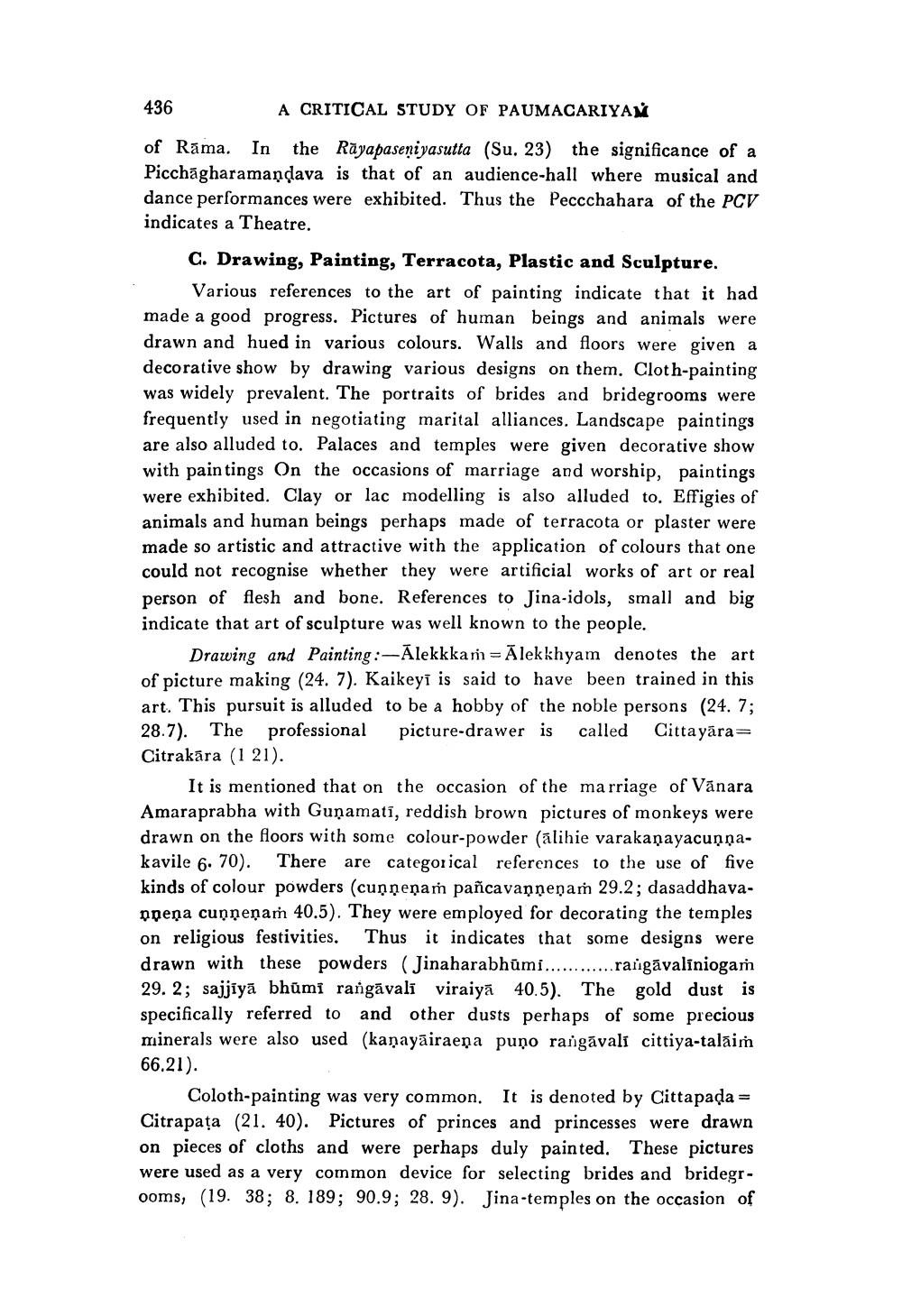________________
436
A CRITICAL STUDY OF PAUMACARIYAX
of Rāma. In the Rāyapaseni yasutta (Su. 23) the significance of a Picchāgharamandava is that of an audience-hall where musical and dance performances were exhibited. Thus the Peccchahara of the PCV indicates a Theatre.
C. Drawing, Painting, Terracota, Plastic and Sculpture.
Various references to the art of painting indicate that it had made a good progress. Pictures of human beings and animals were drawn and hued in various colours. Walls and floors were given a decorative show by drawing various designs on them. Cloth-painting was widely prevalent. The portraits of brides and bridegrooms were frequently used in negotiating marital alliances. Landscape paintings are also alluded to. Palaces and temples were given decorative show with paintings On the occasions of marriage and worship, paintings were exhibited. Clay or lac modelling is also alluded to. Effigies of animals and human beings perhaps made of terracota or plaster were made so artistic and attractive with the application of colours that one could not recognise whether they were artificial works of art or real person of flesh and bone. References to Jina-idols, small and big indicate that art of sculpture was well known to the people.
Drawing and Painting :-Alekkkan = Ālekkhyam denotes the art of picture making (24. 7). Kaikeyi is said to have been trained in this art. This pursuit is alluded to be a hobby of the noble persons (24. 7; 28.7). The professional picture-drawer is called Citta yāra= Citrakāra (1 21).
It is mentioned that on the occasion of the marriage of Vānara Amaraprabha with Gunamati, reddish brown pictures of monkeys were drawn on the floors with some colour-powder (alihie varakaņayacuņņakavile 6. 70). There are categorical references to the use of five kinds of colour powders (cuņņeņaṁ pañcavaņņeņam 29.2; dasaddhavappena cuņņeņam 40.5). They were employed for decorating the temples on religious festivities. Thus it indicates that some designs were drawn with these powders (Jinaharabhūmi............rarigāvaliniogam 29. 2; sajjiyā bhūmi rangāvali viraiyā 40.5). The gold dust is specifically referred to and other dusts perhaps of some precious minerals were also used (kaņayāiraeņa puņo rangāvali cittiya-talāim 66.21).
Coloth-painting was very common. It is denoted by Cittapada = Citrapața (21. 40). Pictures of princes and princesses were drawn on pieces of cloths and were perhaps duly painted. These pictures were used as a very common device for selecting brides and bridegrooms, (19. 38; 8. 189; 90.9; 28. 9). Jina-temples on the occasion of




